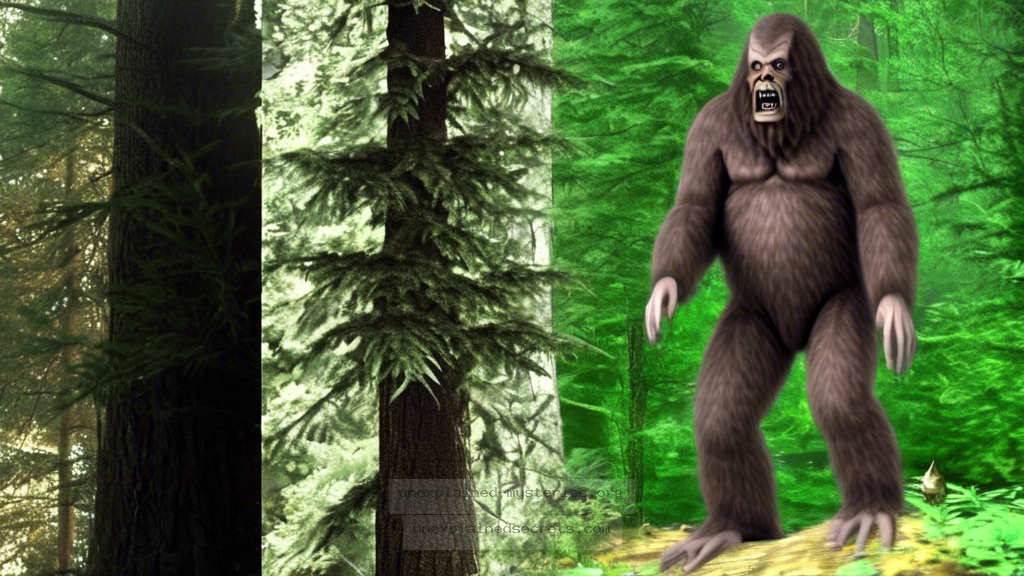What Can the Patterson-Gimlin Film Reveal About Bigfoot’s Existence?
What Can the Patterson-Gimlin Film Reveal About Bigfoot’s Existence?
The Patterson-Gimlin film, shot in 1967, remains one of the most compelling pieces of evidence in the ongoing debate about the existence of Bigfoot. This enigmatic footage has ignited curiosity, skepticism, and a plethora of research in the field of cryptozoology. But what exactly does this film reveal, and why does it continue to captivate so many? In this post, we will delve deep into the various aspects of the Patterson-Gimlin film, examining its historical context, scientific scrutiny, and the broader implications for the study of Bigfoot.
The Historical Context of the Patterson-Gimlin Film
The Patterson-Gimlin film was recorded on October 20, 1967, in Bluff Creek, California. Roger Patterson and Bob Gimlin were two men on an expedition to capture evidence of Bigfoot, which they believed to be a real creature inhabiting the dense forests of the Pacific Northwest. The film captures a large, hairy figure walking across a creek bed, and its authenticity has been debated ever since. The cultural backdrop of the 1960s—a time of increasing interest in folklore, cryptids, and the natural world—helped set the stage for the film’s significance.
During the 1960s, there was a surge in the popularity of Bigfoot sightings, particularly in the United States. This period saw the publication of numerous books and articles on the subject, bringing the elusive creature into public consciousness. The Patterson-Gimlin film emerged as a pivotal moment in this narrative, sparking both interest and skepticism among researchers and enthusiasts alike.
Core Concepts: What Does the Film Actually Show?
The Patterson-Gimlin film lasts approximately 59 seconds and has been analyzed frame by frame to assess the creature’s characteristics. The figure appears to be about 7 to 8 feet tall, covered in dark hair, and exhibits a distinctive gait that some experts argue is atypical of human movement. This has led to various hypotheses concerning the creature’s anatomy and behavior.
Interestingly, the film’s subject is shown to have a pronounced shoulder width and a lack of visible neck, which has led to discussions about its hominid classification. Various experts, including anthropologists and biologists, have offered interpretations of the footage, contributing to the ongoing debate about whether the film depicts a real creature or a cleverly crafted hoax.
Scientific Scrutiny: Analyzing the Footage
The scientific community remains divided over the authenticity of the Patterson-Gimlin film. Several studies have attempted to analyze the creature’s movement and physical characteristics using modern technology, including computer analysis and motion capture. Some researchers argue that the film’s quality, although grainy, provides enough detail to suggest that the subject is not a person in a costume.
For instance, Dr. Jeff Meldrum, a prominent anthropologist, has stated that the film shows features consistent with a non-human primate, such as elongated limbs and a unique foot structure. On the other hand, skeptics like Dr. Donald R. Prothero have pointed out that the film could easily be a man in a suit, given the lack of corroborating evidence from the area.
| Aspect | Pro Authenticity | Anti Authenticity |
|---|---|---|
| Movement | Unusual gait suggests non-human anatomy | Could imitate a human in a costume |
| Physical Characteristics | Large size, broad shoulders | Lack of clear details supports skepticism |
| Historical Impact | Set a precedent for cryptozoological evidence | Critics argue it detracts from scientific credibility |
Practical Implications: What This Means for Bigfoot Research
The Patterson-Gimlin film has led to a variety of research initiatives aimed at understanding Bigfoot and its supposed habitat. Various expeditions and studies have been launched in Bluff Creek and similar environments, focusing on the ecological conditions that could support a large, unidentified primate. These include investigations into food sources, breeding habits, and potential shelter.
Moreover, the film has stimulated the development of new methodologies in cryptozoology. Researchers have begun to utilize advanced technologies such as drone surveillance, infrared cameras, and acoustic monitoring to capture evidence of Bigfoot activity. The film serves as a reminder of the importance of empirical evidence in this field, pushing researchers to adopt more rigorous scientific methods.
Alternative Perspectives: The Hoax Theory
While many enthusiasts believe in the authenticity of the Patterson-Gimlin film, there exists a robust counter-narrative asserting that it is a hoax. Proponents of this theory cite various inconsistencies, including the lack of additional evidence from the site and the fact that both Patterson and Gimlin had a vested interest in promoting Bigfoot. Skeptics argue that the film’s grainy quality could conceal the truth and that advancements in suit design during that era make it plausible that a costume could have been used.
Critics also point out that both men were seeking financial gain from their supposed discovery, as Patterson had written a book about his experiences, and Gimlin later participated in various Bigfoot-related events. This financial incentive has led some to conclude that the film could have been concocted for profit. However, despite numerous claims of hoaxes, none have successfully matched the film’s details.
Common Misconceptions About Bigfoot
Many misconceptions surround Bigfoot and the Patterson-Gimlin film, often propagated by media portrayals and anecdotal accounts. One of the most common is the belief that Bigfoot is merely a myth, rooted in folklore and urban legend. While it’s true that stories of large, hairy creatures exist across various cultures, this does not negate the possibility of an undiscovered species. Another misconception is the idea that all Bigfoot sightings are fabricated. In reality, many credible witnesses, including law enforcement officials and park rangers, have reported encounters that warrant further investigation.
Another misconception is that all evidence for Bigfoot’s existence is anecdotal. While much of the evidence remains circumstantial, the Patterson-Gimlin film represents a significant piece of visual evidence that cannot be easily dismissed. This has led to a growing number of researchers and enthusiasts advocating for a more serious investigation into the phenomenon.
Best Practices for Bigfoot Investigation
For those interested in exploring the mystery of Bigfoot further, there are several best practices to follow. First, approach the subject with an open yet critical mindset. Collecting anecdotal evidence is important, but corroborating it with physical evidence is crucial for establishing credibility. Utilize technology to document findings—cameras, audio recorders, and GPS devices can all enhance the quality of your research.
Additionally, it’s essential to respect the natural environment. Many reported sightings occur in protected areas, and researchers should always prioritize ecological conservation. Engaging with local communities can also provide valuable insights; residents may have their own stories and experiences that contribute to a richer understanding of the phenomena.
Future Developments: Ongoing Research and Interest
The Patterson-Gimlin film continues to inspire new research initiatives and expeditions. Advances in technology, such as improved imaging techniques and genetic analysis, offer potential avenues for studying Bigfoot. For example, genetic testing of hair samples claimed to be from Bigfoot could provide vital information about its biological origins.
Furthermore, the increasing interest in wildlife conservation and the preservation of natural habitats underscores the relevance of the Bigfoot phenomenon. As more people venture into the wild, the potential for new encounters and evidence remains high. Ongoing discussions in the scientific community about the existence of unknown species may also influence future studies of Bigfoot, prompting a more serious exploration of folklore and cryptozoology.
Conclusion: The Legacy of the Patterson-Gimlin Film
The Patterson-Gimlin film remains a cornerstone in the debate over Bigfoot’s existence. Whether viewed as a legitimate piece of evidence or a cleverly executed hoax, the film has undeniably influenced the field of cryptozoology. Its historical context, scientific scrutiny, and the implications for ongoing research serve to enrich our understanding of this fascinating mystery. As technology continues to evolve and our exploration of the natural world deepens, the legacy of the Patterson-Gimlin film will undoubtedly play a crucial role in shaping the future of Bigfoot research.
Other Articles
Recent Posts
- What Happened to Flight MH370? The Conspiracy Theories That Still Haunt Us
- What Secrets Lurk Within the Walls of the Infamous Trans-Allegheny Lunatic Asylum?
- What Evidence Supports the Existence of Bigfoot in the Pacific Northwest?
- What Happened to the Indus Valley Civilization? Unraveling the Mysteries of Ancient Urban Life
- Can Telepathy Be Scientifically Proven Through Laboratory Evidence?







